What is the difference in the flavor and taste of coffee beans treated with sun washing and semi-washing honey?

Professional coffee knowledge exchange more coffee bean information please follow the coffee workshop (Wechat official account cafe_style)
The process from coffee fruit to coffee bean is called coffee treatment. There are more and more coffee bean treatment methods, but the common beans in front street coffee basically include all the current mainstream treatment methods. Beans with different treatment methods are also displayed in the store for guests' reference. Today, let's introduce Qianjie coffee from the four most basic coffee bean treatments, namely, sun drying, water washing, semi-washing and honey treatment.
The structure of coffee fruit, cherry-like coffee fruit, from the outside to the inside are peel, pulp, pectin layer, sheep skin (seed shell), silver skin, seed. The thickness of the pectin layer is about 1-2mm, which can be thought of as the translucent substance outside the tomato seeds, which is difficult to remove. The raw beans we usually buy are actually the innermost seeds and, perhaps, contain some residual silver skins.

All kinds of treatment methods, the purpose is the same, is to peel the beans. Based on the cost of economic considerations, including climate and other natural environmental conditions, so that the processing of beans may not be the same, but the process will affect the results!
Solarization:
Tanning is the oldest and most convenient way to treat raw beans.
First, screen the floating beans.
Pour the harvested coffee fruit into a large trough, and the ripe and full fruit will sink to the bottom of the water; the underdeveloped or overripe fruit will surface, and these floating beans need to be removed.
2. Sun drying
Next, the whole coffee fruit with meat belt is put on the bean drying farm to dry, and the water content is about 12%. It takes about two to four weeks, depending on the climate of the place of origin.
Third, shelling
The dried fruit will be naturally dried and the dried peel, pulp and sheepskin will be removed by a shelling machine, and the raw beans will appear.
The advantages of solarization
1. Simple, low processing cost.
two。 The raw bean is naturally dried in the pulp and absorbs the essence of the fruit, so the fruit is rich, sweet and mellow in thickness.
Shortcomings of solarization method
1. In some producing areas, the sun treatment did not screen out the floating beans, resulting in defects in the quality.
two。 During the drying process, the pulp is easy to mildew due to the return of moisture, which pollutes the raw beans.
3. The shelling of the machine inevitably hurts the raw beans, resulting in appearance defects.

Qianjie coffee is roasted and brewed with Ethiopian sun Guji coffee beans.
Qianjie Coffee Sun Guji Guji NATURAL
Country: Ethiopia
Producing area: Guji
Altitude: 1800-2100 m
Treatment: sun treatment
Variety: native species

Baking suggestion
When the furnace temperature reaches 175℃, the firepower is 130,130, the throttle is set up 3, and the temperature recovery point is 1mm. When the furnace temperature is 140℃, the throttle opens to 3.5and the firepower remains unchanged; when the furnace temperature is 155.6 ℃, the bean watch turns yellow, the grass smell disappears completely, and enters the dehydration stage. When the furnace temperature reaches 176℃, the firepower is adjusted to 110and the throttle remains unchanged.
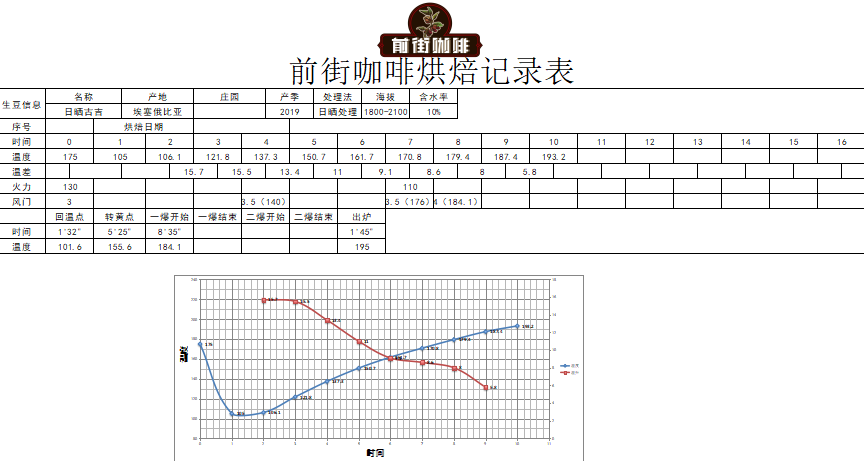
The smell of toasted bread has obviously changed to the smell of coffee, which can be defined as a prelude to an explosion. At this time, it is necessary to listen carefully to the sound of the explosion point. The sound of the explosion point starts to explode at the 8th hour, the throttle is adjusted to 4, and after the explosion, it is developed to turn into a coffee scent. 195 ℃.
Flavor: tropical fruit, litchi, citrus, caramel, cream
Washing method:
Water washing is a common method of raw bean treatment at present.
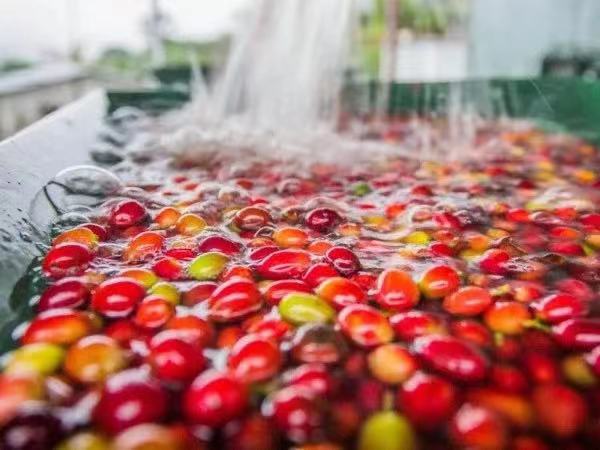
First, screen the floating beans (the same sun method)
Second, remove the pulp
The fresh fruit is sent to the pulp screening machine (pulping machine) to remove the peel and pulp, and the immature fruit will be screened at this stage because it is not easy to separate the pulp. After the pulp screening machine, all that is left is pectin, sheepskin and seeds.
Third, ferment to remove pectin
Transfer the peeled seeds with pectin into the fermentation tank. Although the name is water [washing] method, in fact, it does not really wash away pectin, but through the fermentation process, pectin is removed by biodecomposition. The fermentation process is about 16-36 hours, during which the pectin must be stirred frequently to accelerate the separation of pectin from the seeds. Water washing fermentation produces acid substances such as citric acid, malic acid and acetic acid, which seep into raw beans, making the beans sour more sour than in the sun. After the fermentation is completed, it is really washed-- wash the beans again.
IV. Drying
After washing, you also need to be insolated or machine-dried to reduce the water content to 12%. Washing method because the flesh has been removed, so in the drying process, do not have to worry about easy mildew like the sun method. Dried sheepskin raw beans are not as hard as those with pulp and peel in the sun, and can be obtained by grinding and shelling with a hulling.

Advantages of washing method
1. Raw beans are dark green in color, complete in appearance and sell well.
two。 The sour taste and bright feeling are better than the sun-dried beans, and the flavor is cleaner.
Shortcomings of washing method
1. In order to obtain 200g raw beans, it takes 1 kilogram of fruit to be washed and about 2-10 liters of clean water to be consumed. The cost is high.
Front Street Coffee Panamanian Poket washing Flower Butterfly
Producing area: Pokuit, Panama
Variety: 70% rose summer, 30% Kaddura & Kaduai
Altitude: 1600-1650
Treatment: washing treatment
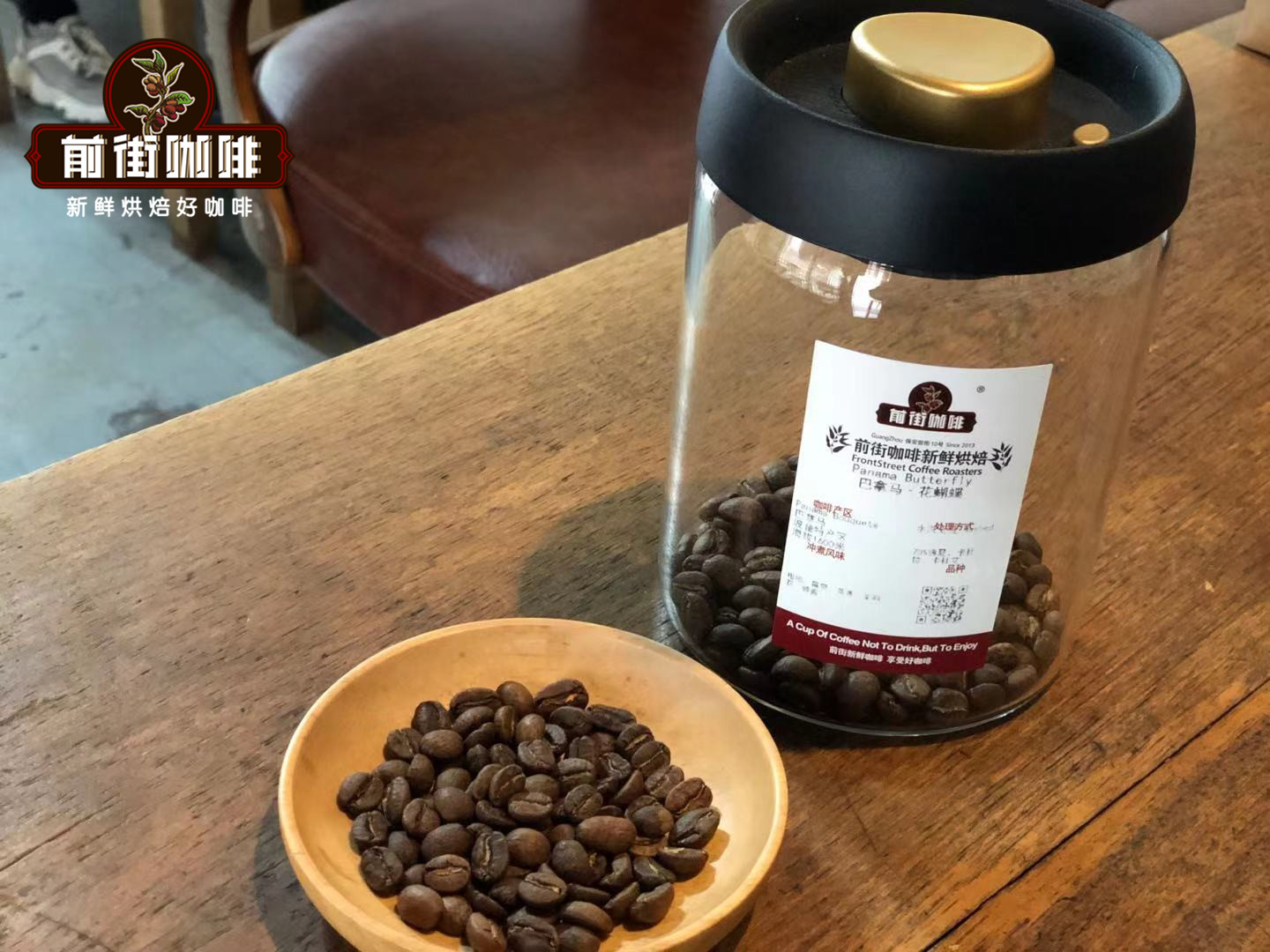
Baking curve
Roaster Yangjia 800N semi-direct fire (baking capacity 550g)
The furnace temperature is preheated to 200℃ into the pot, the firepower is adjusted to 160after 30 seconds, the throttle is opened to 3, the temperature recovery point is 31 ", keep the firepower; 4", the smell of grass turns yellow, the smell of grass disappears, and enters the dehydration stage, the firepower is reduced to 130℃ at 165℃, and the throttle keeps 4 ".
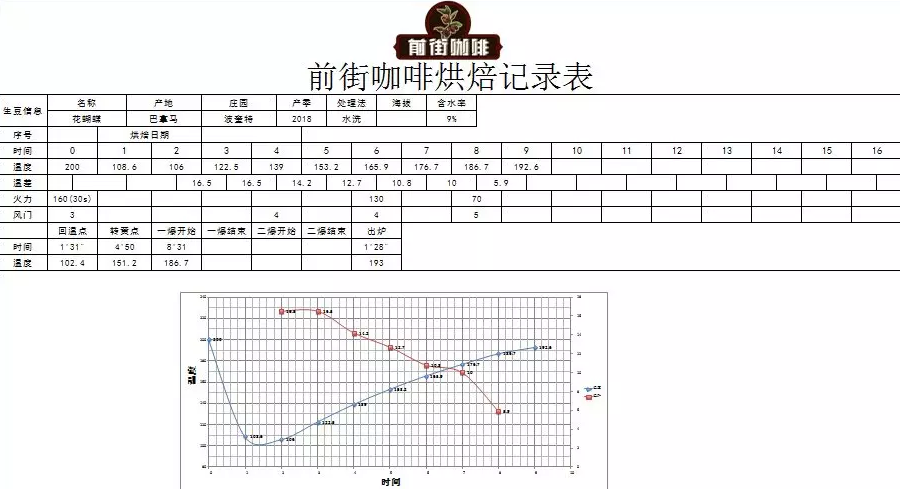
After dehydration, the bean surface appears wrinkles and black markings, and the smell of toast changes to coffee, which is a prelude to an explosion. Listen to the sound of an explosion. When the sound of the explosion begins, the throttle is fully open for 5, and the firepower is adjusted to 70 ℃. After an explosion, the development time is 1mm, 39th, 28th, and the pot is 193 ℃.
Flavor: citrus, jasmine, honey, berries, the overall flavor is clean, floral and citrus acid notes are obvious.
Semi-washing method:
An improved treatment method for reducing water consumption of traditional washing method
First, screen the floating beans (same as washing method)
2. Remove the pulp (same as washing method)
Third, machine de-pectin
The original water washing method is to remove pectin by fermentation, but the improved method is to remove pectin mechanically by pectin scraper (demucilager).
IV. Drying
Sun or mechanical drying to 12% water content, semi-washed bean flavor between sun-washed beans and water-washed beans, no water-washed bean acid, no sun-washed beans sweet.
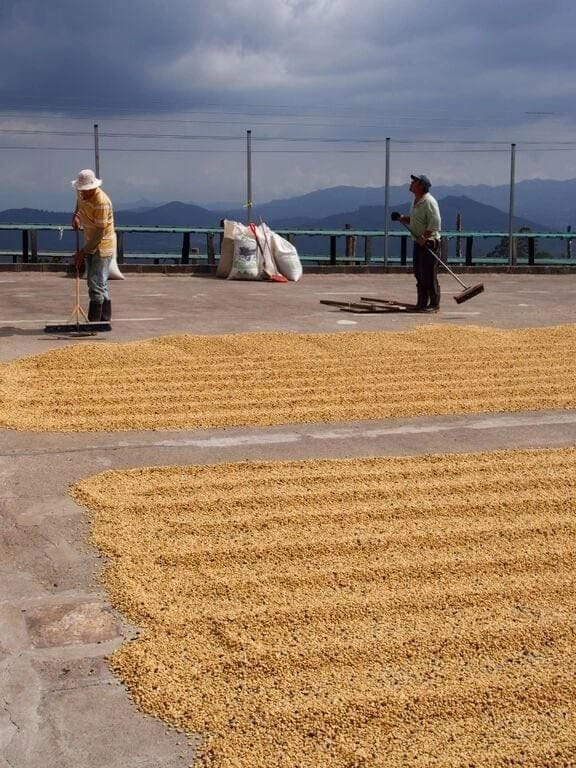
Advantages of semi-washing
With the cleanliness of the washing method, it does not need to consume a lot of water.
Semi-washing defect
Although it is a mixture of washing and tanning, its process is as tedious as washing.
Isabella of Colombia
Country: Colombia
Producing area: Huilan
Variety: pink bourbon
Treatment: semi-washing
Altitude: 1760m

Baking curve
Furnace temperature to 180 ℃ into the pot, throttle open 3, firepower of 120; tempering point 1 temperature 390 ℃, firepower unchanged, throttle open to 4; at this time the bean surface turns yellow, the smell of grass completely disappears, entering the dehydration stage, firepower drops to 70 when firepower drops to 100180 ℃ at 176℃, throttle remains unchanged.

The smell of toasted bread has obviously changed to the smell of coffee, which can be defined as a prelude to an explosion. At this time, it is necessary to listen carefully to the sound of the explosion point. When the sound of the explosion starts, adjust the throttle to 5 (the tuning power should be very careful and not be so small that there is no burst sound). After an explosion, the development of 1 cup 39th 30 ", 191.5 ℃ into the pot.
Flavor: the entrance has citrus, berries, virgin fruit, under the change of temperature, there is honey sweetness, the aftertaste is floral, smooth and clean.
Honey treatment method:
What is the honey treatment method: according to its original meaning, its scientific name should be "pulp natural", the same as the traditional wet treatment method, it removes the thick peel of coffee cherries and retains the sticky pulp layer (mucilage) below it, then it does not use fermentation to remove the sticky pulp layer, instead let it take this layer to dry directly, and then directly remove the sticky layer and shell (parchment).
Qianjie Coffee baked Rosa Coffee with Panamanian Pocket honey in three curves to compare their flavor and taste.
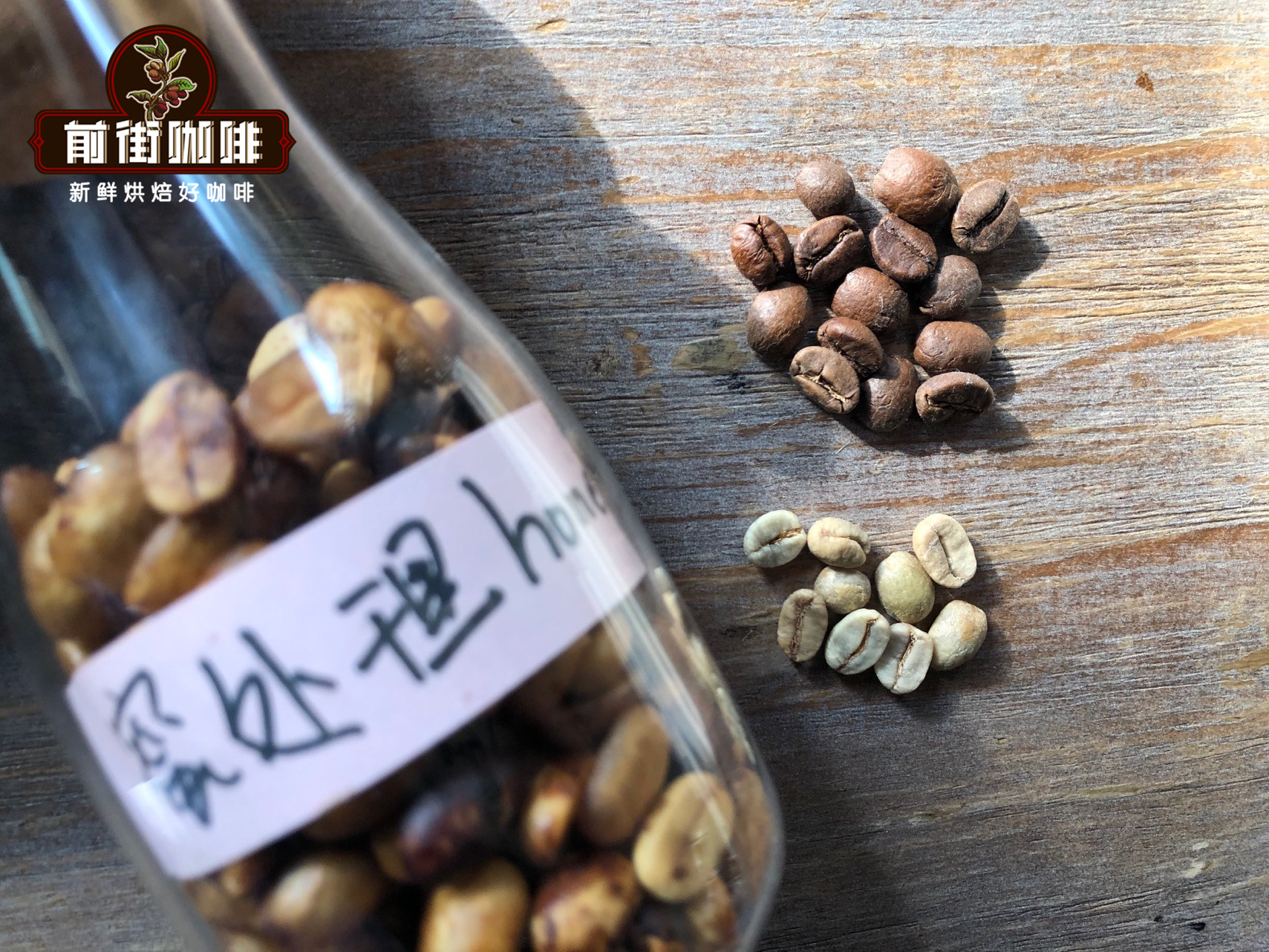
Curve one
The temperature of the soy bean is 170℃ and turns yellow at 5'30 ". The first explosion begins at 8pm 39th 35". The temperature is 181℃. The temperature is 181mm.
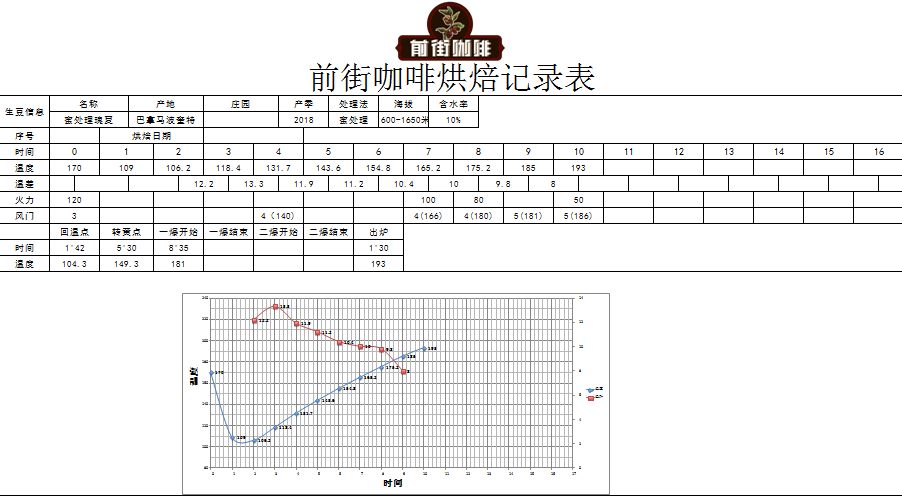
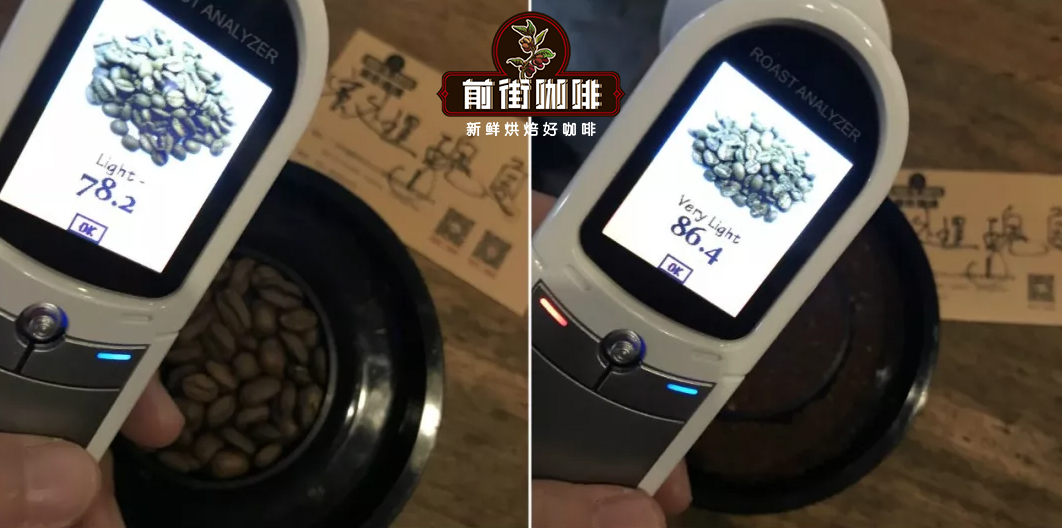
Agtron bean color value is 78.2 (left), Agtron pink value is 86.4 (right), Roast Delta value is 8.2.
Curve two
The temperature of the soy bean is 170℃ and turns yellow to 5'25 ". The first explosion starts at 8pm 39th 52", the temperature is 181.3 ℃, and the first explosion develops at 1mm 39th 45 ". The temperature is 193.2 ℃.
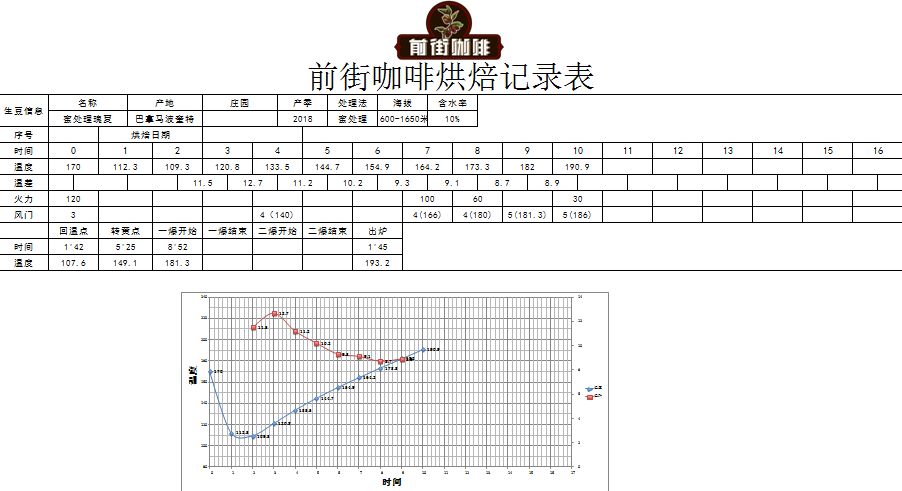
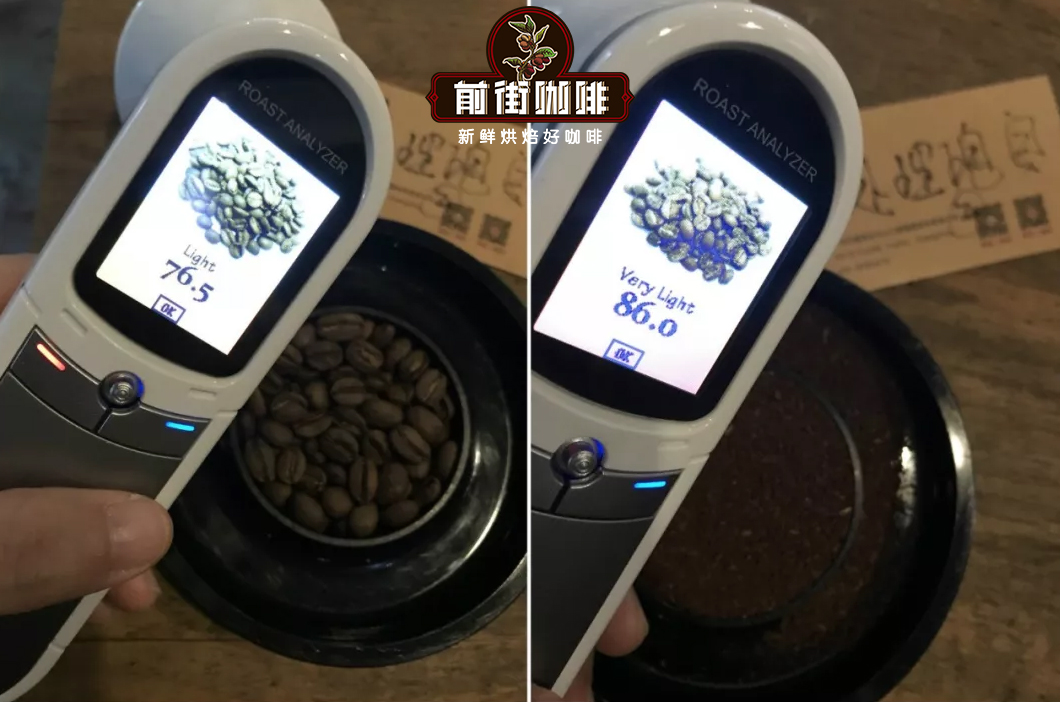
Agtron bean color value is 76.5 (left), Agtron pink value is 86 (right), Roast Delta value is 9.5.
Curve three
The temperature of the soy bean is 170℃, the yellow point is 5pm 39th 25 ", the first explosion begins at 8pm 39th 37", the temperature is 182.5 ℃, the temperature of one explosion development is 1mm 39th 28 ", the temperature is 190.5 ℃.
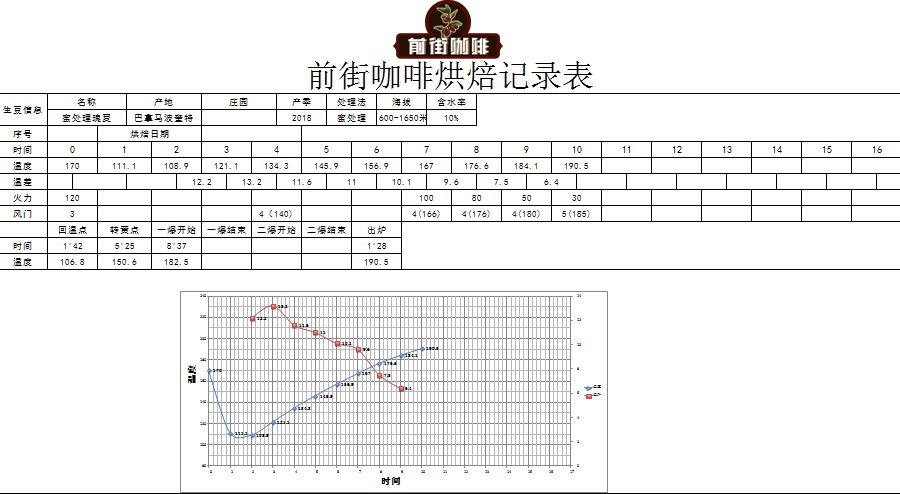
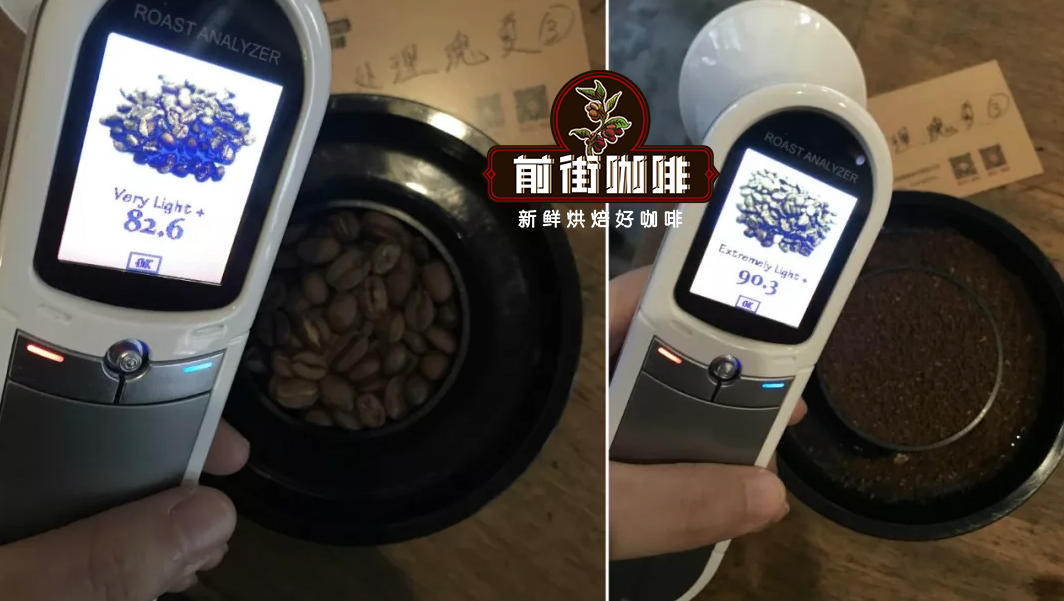
Agtron bean color value is 82.6 (left), Agtron pink value is 90.3 (right), Roast Delta value is 7.7.
Cup test comparison
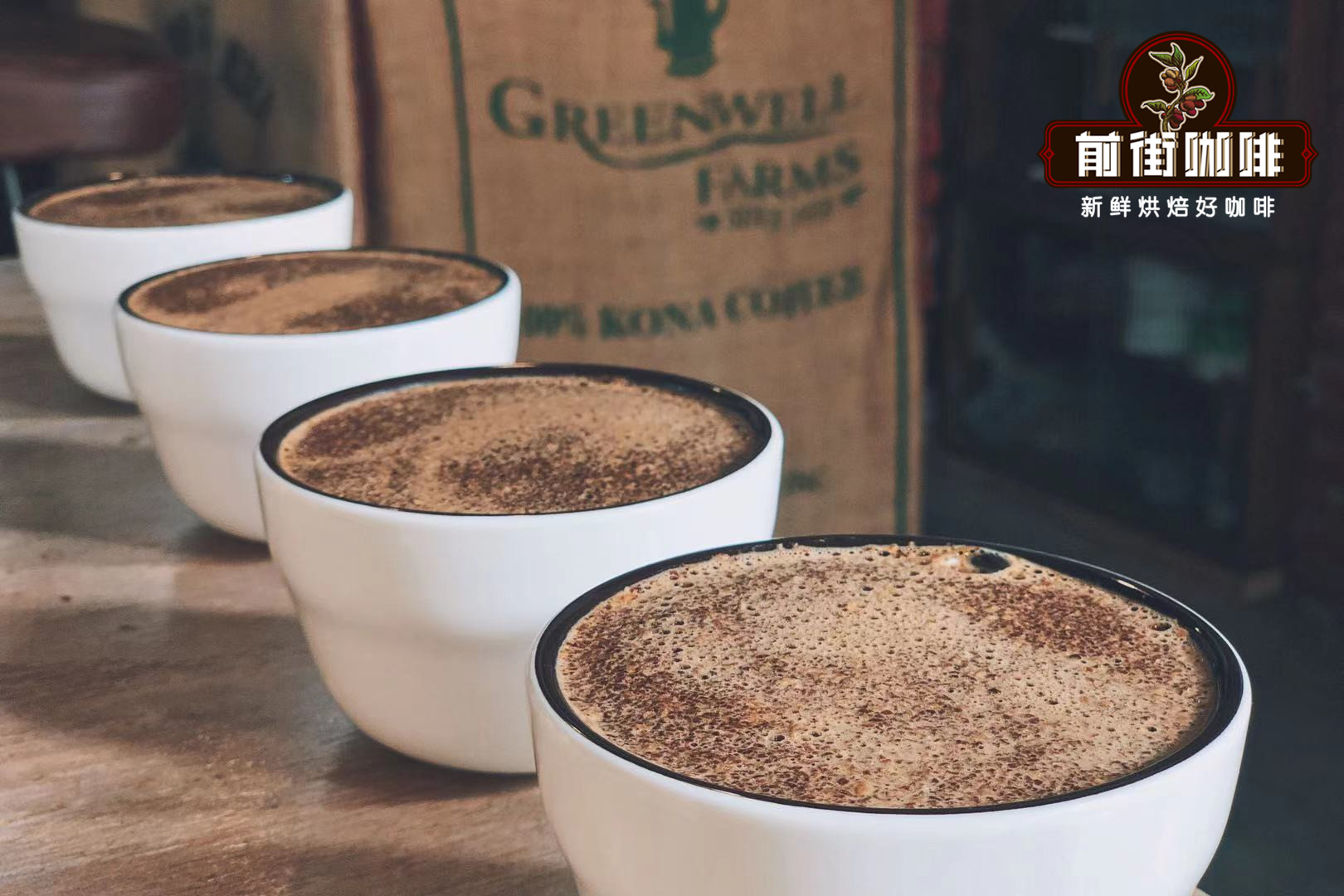
[curve 1] when sipping, it has the flavor of plum, lime, citrus and cream, green tea and fermented flavor.
[curve 2] when sipping, there are sour notes of sweet oranges, plums, oranges, tropical fruits, cream and a hint of fermented and floral aromas.
[curve 3] when sipping, there are lemon, plum, sweet orange, cream flavor, jasmine and fermentation aroma, with oolong tea feeling at the end.
After the cup test, we felt that the flavor of [Curve 1] was not concentrated enough, and the flavor level was relatively thin, while both [Curve 2] and [Curve 3] performed very well in terms of sweet and sour tastes. So we decided to flush a pot of [Curve 2] and [Curve 3] by hand to see how the two curves perform in the way of hand cooking.
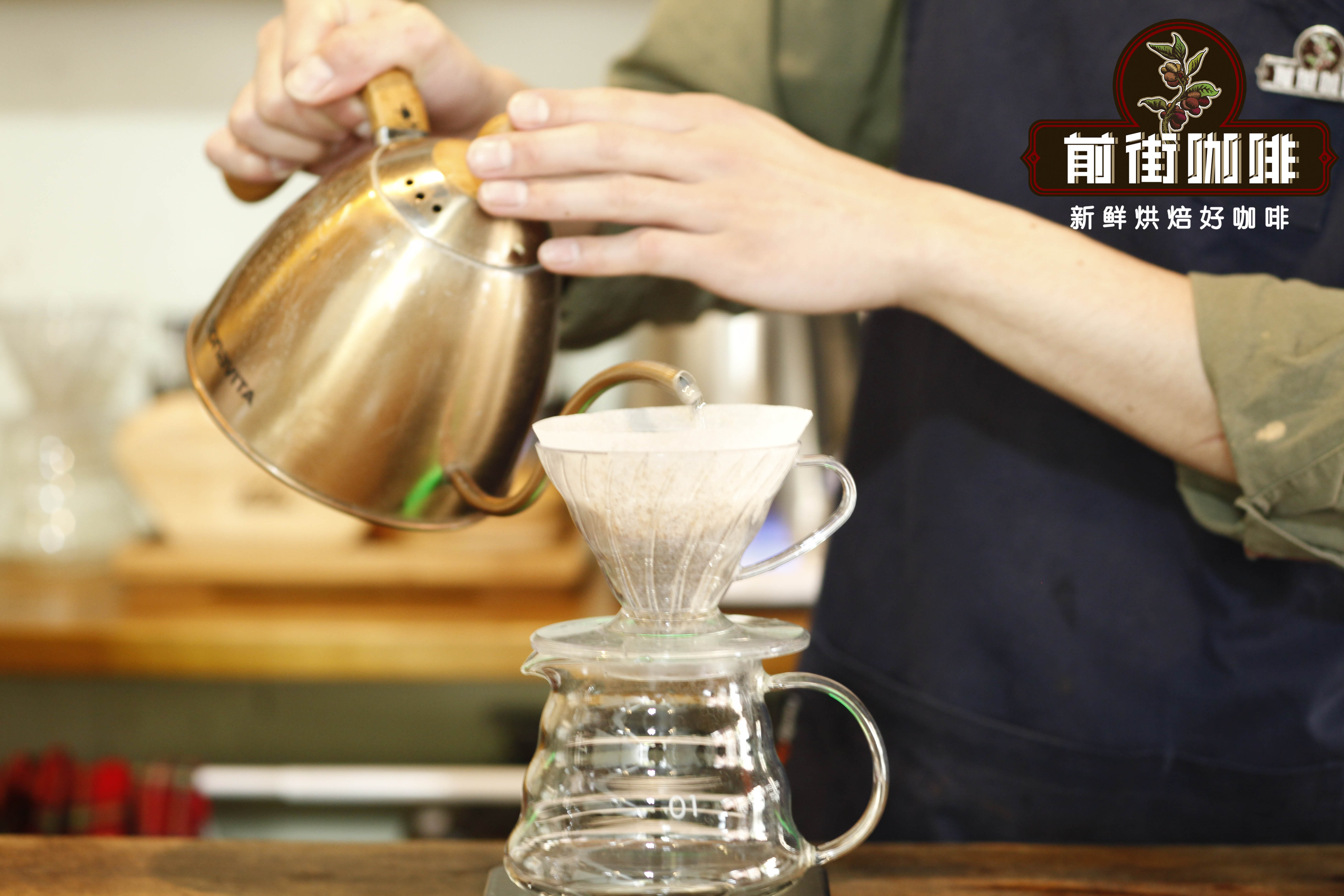
Parameters: water temperature: 90 ℃; medium and fine grinding: VARIO 50 (Chinese standard No. 20 sieve pass rate 80%); filter cup: Hario V60; ratio of powder to water: 1:15.
Technique: segmented extraction. Steam 30 grams of water for 30 seconds, cut off the water when injecting water to 125 grams, continue to inject water to 225 grams when the water level is about to expose the powder bed, remove the filter cup when the water level is about to expose the powder bed, and the extraction time is two minutes.
[curve 2] there are sour notes of lime, plum and pineapple in the mouth, nutty flavor in the middle, cocoa and nutty flavor in the end, caramel and ginger finish.
[curve 3] it smells fermented and floral, with sour notes of citrus and lemon on the entrance, creamy sweetness in the middle, green tea in the end, sugar and honey.
The difficulties of honey treatment:
1. In the process of drying, because the sticky pulp layer is still on the coffee beans, it must be turned frequently in the first few days to prevent the coffee beans from sticking together, so it requires much more manual work than the normal washing method.
two。 If you can't dry it as soon as possible, it's easy to overfermentation.
3. If the overall environment is too wet and too cool, or if the sticky pulp layer is left too thick, the coffee beans will easily get moldy, so some coffee farms will use machines to control the thickness of the sticky pulp layer left behind, so that the coffee beans can be dried more quickly, and the overall taste will be more consistent.
4. Compared with wet treatment, it requires more space and takes longer days to dry.
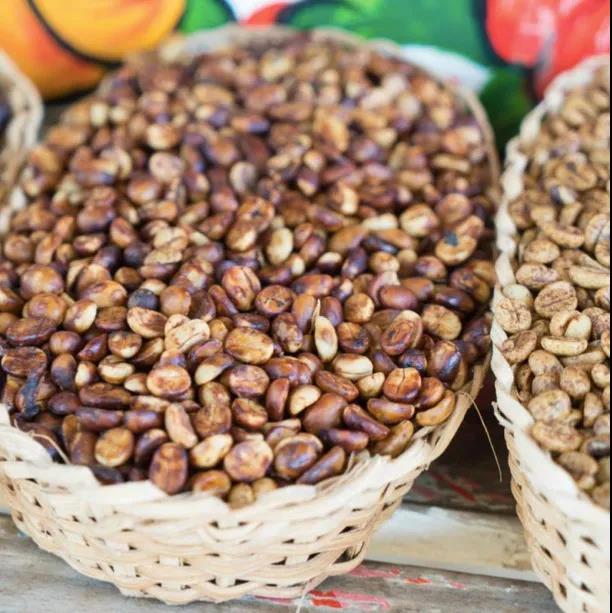
Enhancement method:
1. In the first 2-3 days of the sun, it is best to be done under round-the-clock monitoring, during which part of the pulp layer has been dried and the coffee is less likely to have a bad fermented taste.
two。 In the process of drying, a high scaffolding can be used to make the whole process better ventilated and less prone to mildew.
3. If you dry on the patio or terrace, the mucus in the pulp layer will seep into the patio, so you need to clean up a batch of coffee beans before drying them.
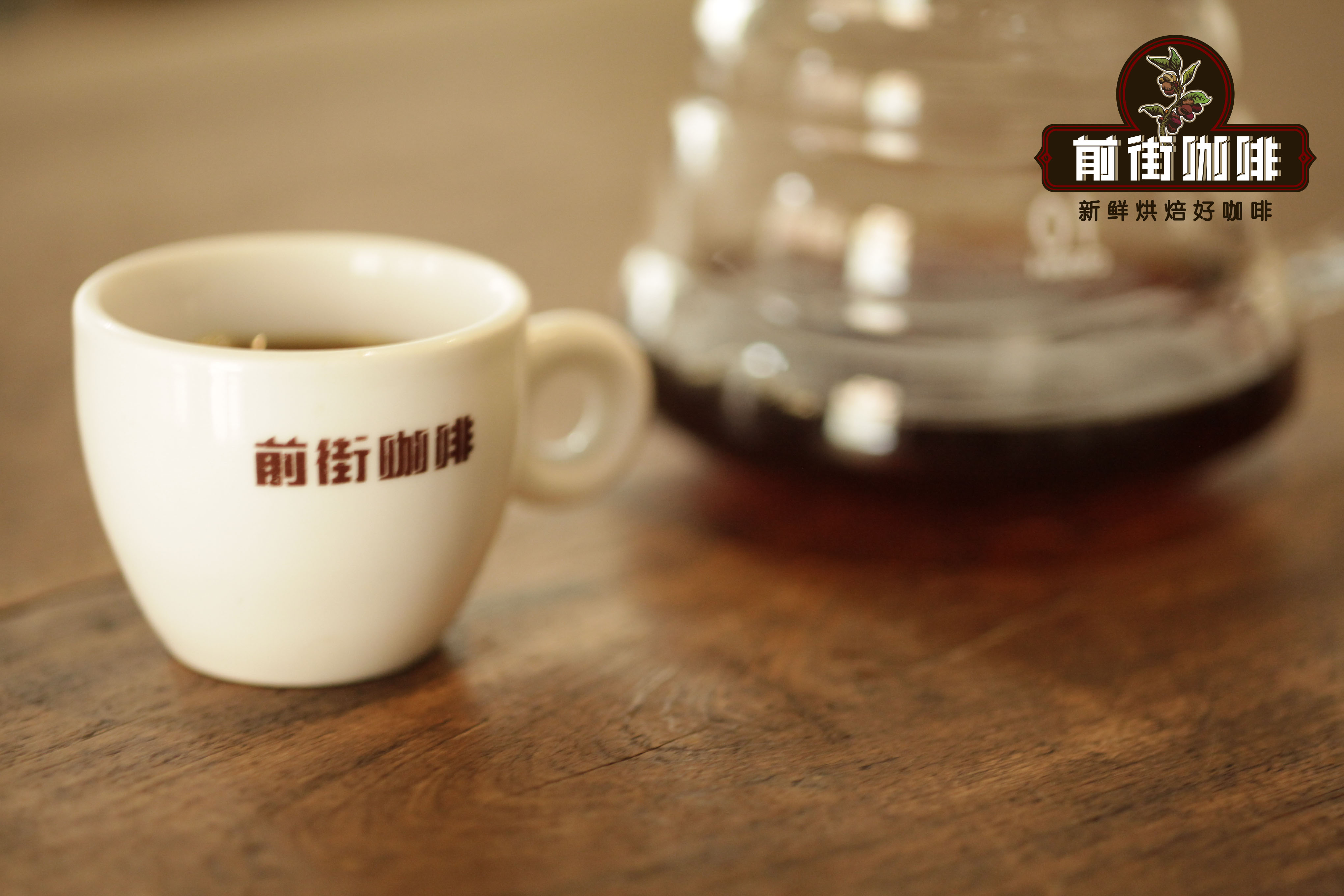
Taste and characteristics:
The advantage of honey treatment is to enhance the body and sweetness of coffee (so also known as honey process or miel process), relatively reduce its acidity, and the aroma will be more detailed, but this is the taste after the honey treatment is perfectly executed, if not well executed, it will have a bad acetic acid taste, like the spicy flavor of onion or garlic, even if it is carried out quite well, it will still bring some muddy taste, and the rest of the rhyme will be less clean. Miscellaneous smell will also be heavier than the general water washing method, so on the whole, the risk of using honey treatment method is much higher than that of general wet treatment method.
For more boutique coffee beans, please add private Qianjie coffee on Wechat. WeChat account: kaixinguoguo0925
Important Notice :
前街咖啡 FrontStreet Coffee has moved to new addredd:
FrontStreet Coffee Address: 315,Donghua East Road,GuangZhou
Tel:020 38364473
- Prev
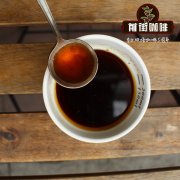
What is the effect and effect of drinking black coffee? Does black coffee have the effect of losing weight? What's the good or bad?
Professional coffee knowledge exchange more coffee bean information please follow the coffee workshop (Wechat official account cafe_style) what is the effect and function of drinking black coffee? Does black coffee have the effect of losing weight? What are the advantages and disadvantages? Coffee can help you lose weight? Black coffee, also known as caffeine, without sugar and milk, can not only taste the original mellow taste of coffee beans, but also benefit
- Next
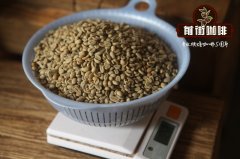
The difference between half-sun and half-washed coffee beans is the difference between half-sun and water-washed flavor and taste
Professional coffee knowledge exchange more information about coffee beans Please follow the coffee workshop (Wechat official account cafe_style) what's the difference between half-sun and half-washed coffee beans? What's the difference in flavor and taste between half-sun and water washing? Coffee beans are mainly treated in the sun and washing, as well as half-sun (or honey treatment) and semi-washing, both of which are more common.
Related
- Detailed explanation of Jadeite planting Land in Panamanian Jadeite Manor introduction to the grading system of Jadeite competitive bidding, Red bid, Green bid and Rose Summer
- Story of Coffee planting in Brenka region of Costa Rica Stonehenge Manor anaerobic heavy honey treatment of flavor mouth
- What's on the barrel of Blue Mountain Coffee beans?
- Can American coffee also pull flowers? How to use hot American style to pull out a good-looking pattern?
- Can you make a cold extract with coffee beans? What is the right proportion for cold-extracted coffee formula?
- Indonesian PWN Gold Mandrine Coffee Origin Features Flavor How to Chong? Mandolin coffee is American.
- A brief introduction to the flavor characteristics of Brazilian yellow bourbon coffee beans
- What is the effect of different water quality on the flavor of cold-extracted coffee? What kind of water is best for brewing coffee?
- Why do you think of Rose Summer whenever you mention Panamanian coffee?
- Introduction to the characteristics of authentic blue mountain coffee bean producing areas? What is the CIB Coffee Authority in Jamaica?

